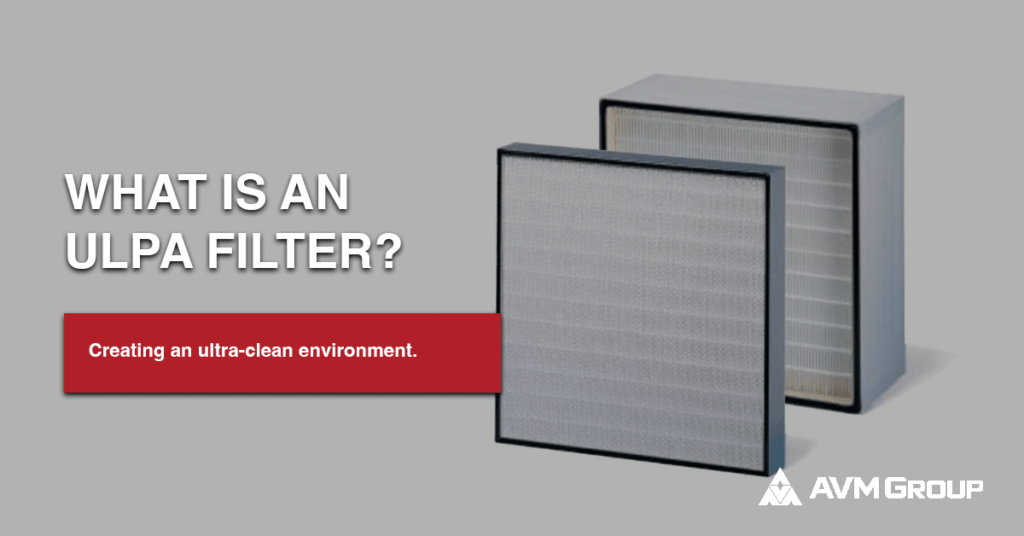*This post is part of a much larger pillar blog: The Complete Guide to Controlled Environments
Table of Contents
ToggleIntroduction
In the quest for healthier indoor environments and more consistent controlled environments , ULPA filters have emerged as a powerful ally. ULPA, or Ultra-Low Penetration Air, filters represent a remarkable advancement in air filtration technology.
They play a pivotal role in maintaining clean and breathable air within indoor spaces, thereby enhancing both human health and productivity. In this article, we will delve into the world of ULPA filters, exploring their mechanisms, applications, benefits, and dispelling common misconceptions.
What are ULPA Filters?
ULPA filters are a specialized class of air filters designed to capture and remove extremely small particles from the air, typically only used in business settings.
Unlike conventional air filters found in residential spaces, these filters are engineered to achieve an exceptionally high level of filtration efficiency, typically removing particles as small as 0.1 micrometers with an efficiency of 99.999%, ten times more effective than a traditional HEPA filter.
This makes these filters an indispensable tool in environments where airborne contaminants must be controlled to a stringent degree.
The Importance of Clean Air in Controlled Environments
When creating a controlled environment, one of the most important requirements is having as few contaminants in the air as possible.
ULPA filters work hand-in-hand with other air quality control methods, including ventilation, air circulation, and other filters present in the room to provide consistent decontamination. Let’s discuss how these filters specifically create this clean air.
GET THE LATEST INDUSTRY NEWS DELIVERED TO YOUR INBOX
Stay on the forefront of your industry with our weekly e-newsletter.
How ULPA Filters Work
ULPA filters employ a complex filtration mechanism to achieve their remarkable efficiency. The filters consist of densely packed fibers arranged in a pleated configuration.
As air passes through the filter, particles are captured by a combination of diffusion, interception, and inertial impaction. This multi-process approach ensures that even the tiniest particles are effectively trapped within the filter media. Why does particle size matter so much for air efficiency?

Understanding Particle Size and Penetration
Particle size plays a crucial role in filtration efficiency. These filters excel at capturing sub-micron particles, making them highly suitable for environments where even the smallest contaminants must be removed, and HEPA filters can’t produce the level of air quality needed.
The ultra-low penetration capability of these filters ensures that the majority of particles are captured, preventing them from recirculating into the air.
Use this chart to reference improved capture of contaminants such as smoke, chemical dust, smog, and pigments/
Efficiency Ratings of ULPA Filters
ULPA filters are renowned for their exceptional efficiency ratings. They are classified based on their ability to remove particles of varying sizes, denoted by a “U15” or “U16” rating.
A U15 rating indicates a filter that removes at least 99.9995% of particles sized 0.1 micrometers, while a U16 filter offers an even higher efficiency, removing 99.99995% of such particles.
Let’s look at some practical examples of how these filters can be implemented.
Benefits of ULPA Filters
The adoption of ULPA filters offers a myriad of advantages, including:
Enhanced Air Quality and Health Benefits:
By removing particles that can trigger allergies and respiratory ailments, ULPA filters contribute to improved health and overall well-being.
Controlling Airborne Contaminants: ULPA filters are highly effective at capturing airborne contaminants such as dust, pollen, bacteria, and viruses.
Reducing the Risk of Airborne Infections: In medical settings, ULPA filters help minimize the spread of infectious agents, enhancing patient safety.
Improved Productivity and Equipment Performance: In industrial environments, these filters support the efficient operation of equipment and processes by reducing the risk of particle-induced malfunctions.
ULPA vs HEPA Filters: Which Do You Choose?
While both ULPA and HEPA (High-Efficiency Particulate Air) filters are highly effective, they cater to different requirements. ULPA filters excel in environments where the removal of sub-micron particles is paramount, while HEPA filters are suitable for applications where slightly larger particles need to be filtered.
The choice between the two depends on the specific needs of the environment.
Conclusion
ULPA filters stand as a testament to human ingenuity in the pursuit of cleaner, healthier indoor environments.
Their exceptional efficiency, wide-ranging applications, and contributions to air quality improvement make them an invaluable asset in various industries.
As technology continues to advance, the future holds exciting prospects for these filters, promising even greater levels of efficiency, sustainability, and overall environmental well-being.
Want to add these filters to your controlled environment? Contact us.



